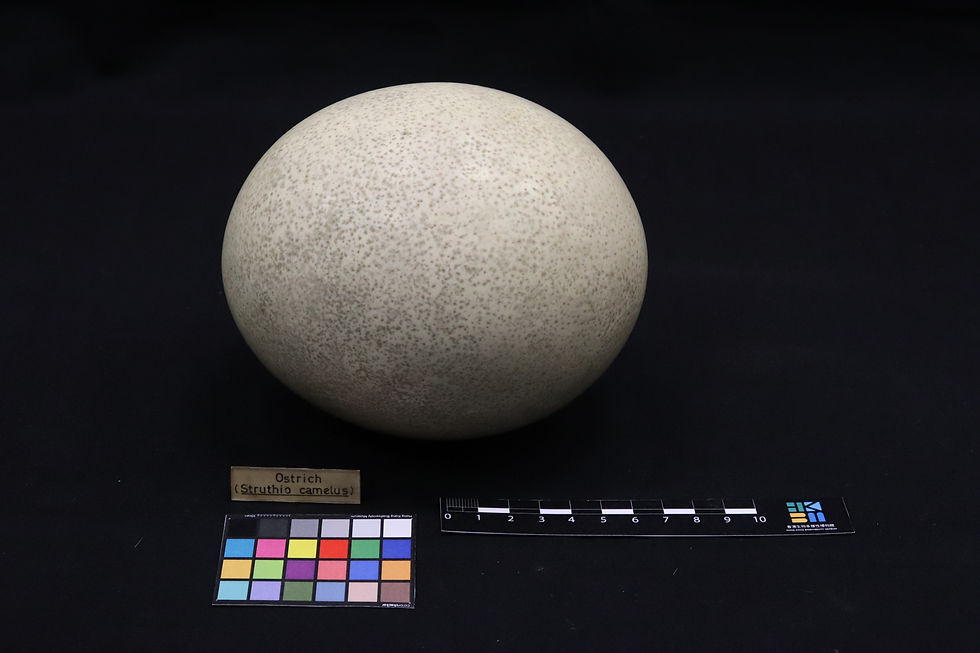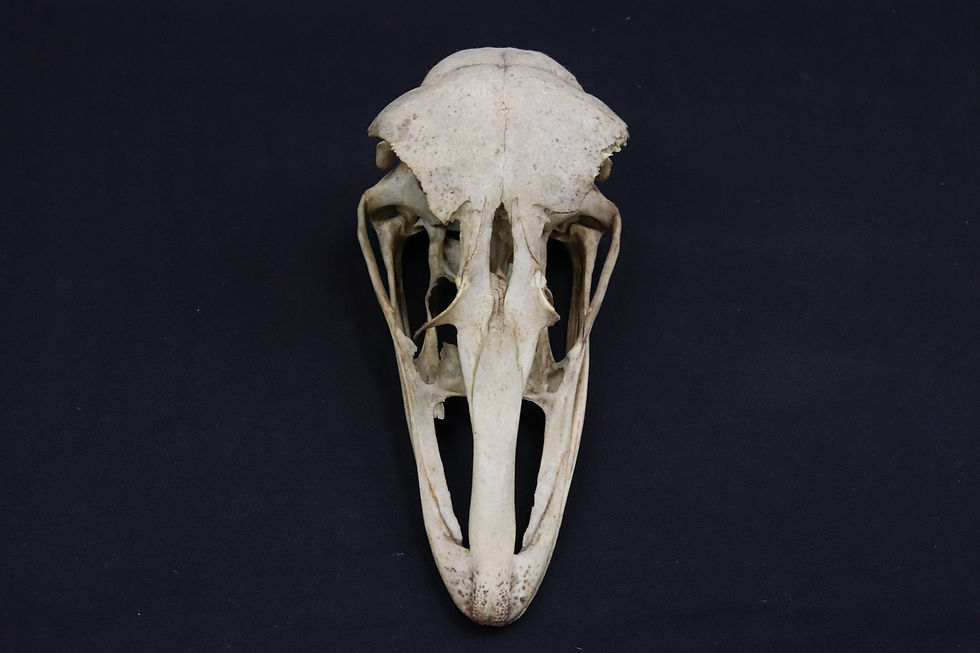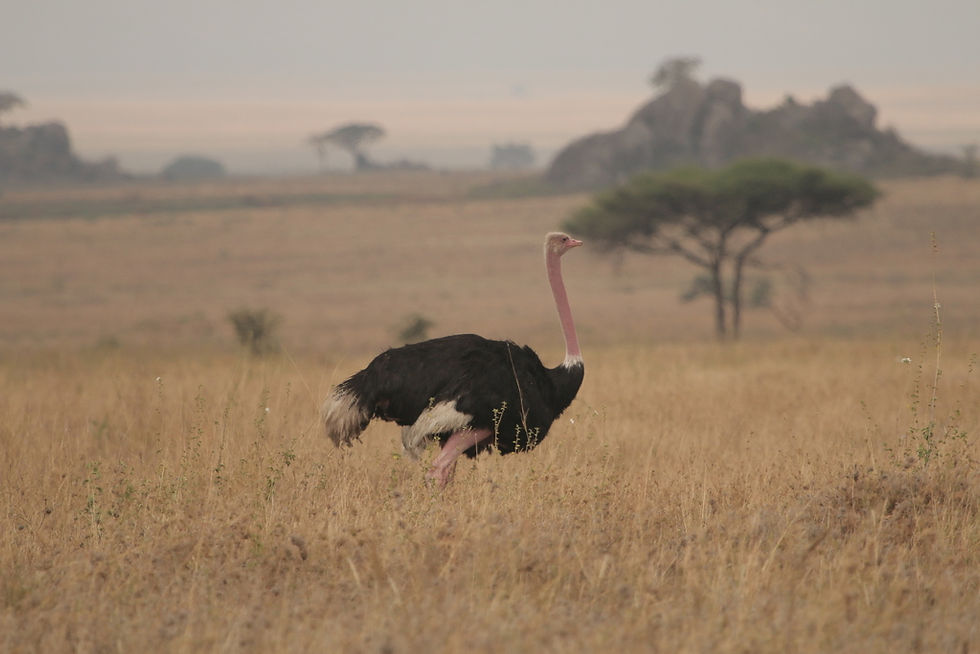top of page
Collection > Order (Birds) > Order Information (Struthioniformes)
Struthioniformes
Struthioniformes, from Latin strūthiō (“ostrich”) and Latin -fōrmis (“-shaped”), in reference to the fact that these animals are ostriches.
Ostrich.
Photos

MBS000823-0

MBS000823-0
1/1

MBS000824-0

MBS000824-0
1/1
DISTRIBUTION
Sub-Saharan Africa.
SIZE
They have long necks and legs, are between 2.1 and 2.75 meters tall, and can weigh between 100 and 130 kg.
MORPHOLOGY
Adult males have predominantly black feathers with a white tail and primaries. On the other hand, one subspecies has buff tails. Females and juvenile males are white and grayish-brown in color. Both the male and female have almost no down covering on their heads and necks. Their enormous orange bills and eyes are striking.
ECOLOGY & HABITAT
They are terrestrial, inhabiting open arid and semi-arid habitats such as savannas and the Sahel, both north and south of the equatorial forest zone.
DIET
Their primary food sources are seeds, bushes, grass, fruit, and flowers. Occasionally, they also consume tiny reptiles like lizards, insects like locusts, and animal carcasses left behind by carnivorous predators.
REPRODUCTION
March or April marks the start of the mating season, which finishes before September. There are regional variations in the mating process. Usually, territorial males defend their territory and harem of two to seven hens by extending their necks. If they are successful in mating, they may create a pair bond with other females in the vicinity, but they will only mate with a 'major' female. The male excavates a solitary, unadorned pit that is between 30 and 60 centimeters deep and 3 meters broad, where the female deposits her fertilized eggs. When it is time to cover the eggs for incubation, the dominant female deposits them first and removes any surplus eggs from the weaker females, usually leaving around 20.
REFERENCES
del Hoyo, J., Elliott, A., Sargatal, J., Christie, D. A. (2010). Handbook of the Birds of the World Series. Lynx Edicions.
Lovette, I. J., Fitzpatrick, J. W. (2016). Handbook of Bird Biology. Wiley-Blackwell.
Gill, F. B., Prum, R. O. (2019). Ornithology. W.H. Freeman & Co. Ltd.
Total species known
2
Species in the collection
2
Species in Hong Kong
0

MBS000958-1

MBS000958-3

MBS000958-1
1/2

Struthio camelus
© Bradley Rasmussen, some rights reserved (CC-BY-NC)

Struthio camelus
© Bradley Rasmussen, some rights reserved (CC-BY-NC)
1/1
bottom of page
